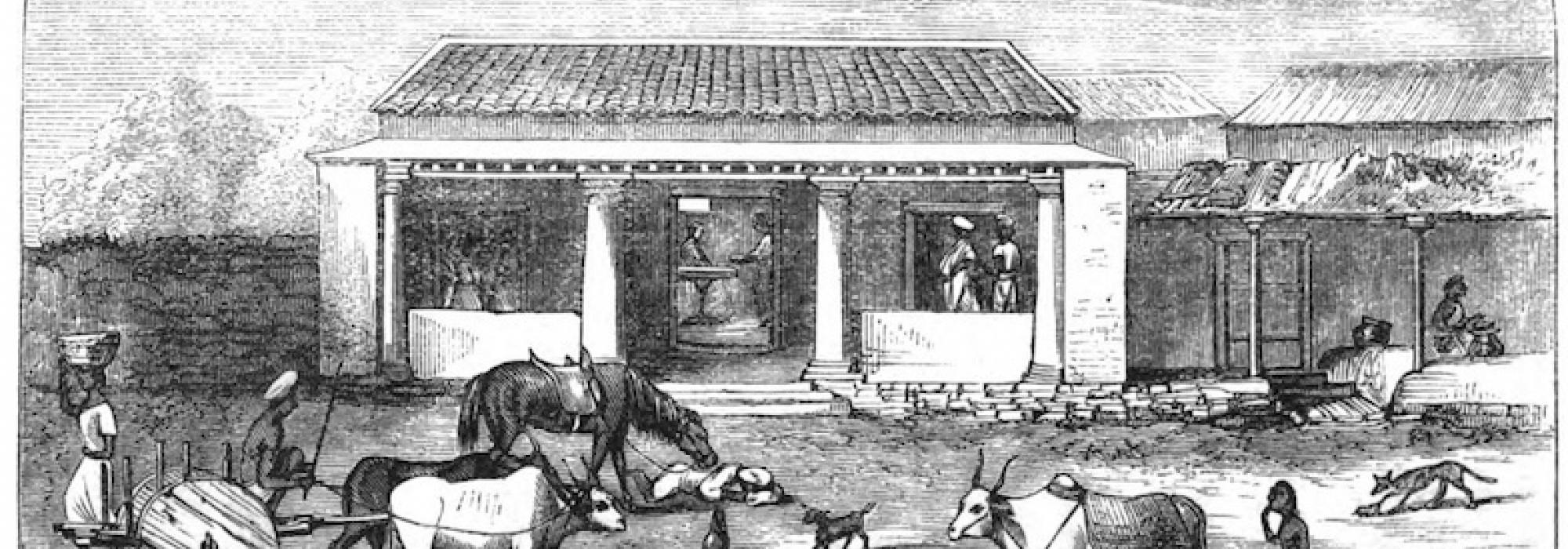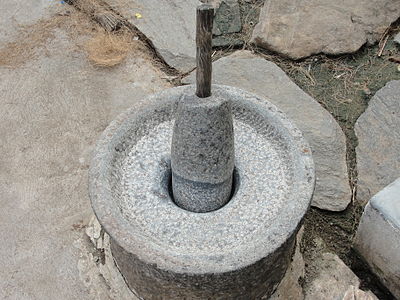Translator’s Note: In this essay, Sri D.V. Gundappa recalls the lives and times of some renowned Vidwans in the Chamarajapet locality in Bangalore. The Vidwans described in this essay were his elder contemporaries with whom he had regular interactions.
Sri Venkataramanayya
I had earlier recalled the name of Sri Venkataramanayya who hailed from Channarayapattana. Nobody would hesitate to acknowledge him as a Vidwan of the highest degree. He was also endowed with a treasure of knowledge in contemporary subjects like English. He worked as a teacher for a few years in the Chamarajendra Sanskrit Patashala and then became its president. Later, he became the Inspector of Sanskrit Patashalas. The only recognizable drawback in him was his short temper. In spite of his short temper, he was enormously compassionate. He has authored several stotrams and books in Sanskrit. One of his Sanskrit works is a play named Kamalavijaya Nataka [Literally: "The Victory of Kamala—a Play"]. This is the Sanskrit translation of the poet Alfred Tennyson’s play, The Cup. He has also written a Sanskrit essay titled Sanatanavijnanasamudayah, a work that shows the commonalities that exist in some principles of Physics and precepts in Sanatana Dharma. His other work is Sarvasamavrutta, book on Prosody. Among all his works, the verse that I can now recall is as follows: parabrahmatattvaM jagajjIvatattvaM tapOyOgagamyaM vikArAdishUnyaM | vibhuM viswarUpaM shivaM shAMtarUpaM sadAnandadaM saccidAnaMdamIDE || This is one sloka of a Pancaratna [literally: “five gems.” In this case, each gem is a sloka.] that he offered in the Divine Presence of the Sringeri Guru.
Hosakote Venkatarama Sastri
Another eminent and renowned Vidwan who lived in Chamarajapet in those days was Hosakote Venkatarama Sastri. He was working as a Pandit in the Wesleyan High School. [i] The Revenue Commissioner, “Rajasevaprasakta” Sri S Hiriyanna was the disciple of Hosakote Venkatarama Sastri. I’ve heard him recall with great appreciation Sri Sastri’s scholarship and method of instruction. Sri Venkatarama Sastri once narrated an intriguing episode to me. Around 1907, the Sringeri Jagadguru visited Bangalore en route to his journey to Kalady, the birthplace of Adi Sankara. I can never forget the kind of enthusiastic and celebratory joy that the citizens of Bangalore exhibited on that occasion. The Dhulipada Puja, [literally: the Puja for the sacred dust of the Jagadguru’s feet) was offered to the Jagadguru near the Mysore Bank building. Hosakote Sri Venkatarama Sastri was performing the said Puja. The Sringeri Swami turned to Sri Venkatarama Sastri with a smiling countenance and pointing to his eyes with his index finger, asked in Telugu: Sringeri Swami: “Do you remember?” VS (grinning): “Can anybody forget that in his entire life?”
Flashback
Here’s the flashback to that conversation. In his childhood, the Sringeri Swami was nurtured under the care of his elder brother, Vidwan Lakshminarasimha Sastri. Both were the sons of the scholar-colossus, Kunigal Rama Sastri. After the father passed away, Sri Lakshminarasimha Sastri nurtured his younger brother. The name of this boy was Siva Swamy. Hosakote Venkatarama Sastri was a disciple studying in Sri Lakshminarasimha Sastri’s home. He took his meals and lodging in that home. On the occasion of the lad Siva Swamy’s birthday, Sri Lakshminarasimha Sastri invited ten Brahmanas for lunch. The spicy delicacy Ambode was one of the dishes on the menu. The task of grinding the Split Bengal Gram, the key ingredient in Ambode, was entrusted to Sri Venkatarama Sastri.
Sri Venkatarama Sastri sat before the stone mortar pouring all the Ambode ingredients inside it: a pile of soaked Bengal Gram, shredded coconuts, green chillies and other items. Then he dropped the pestle inside the mortar. The lad Siva Swamy was standing at the spot, curious to watch this amusement unfold before his eyes. A shard of green chilly jumped out of the mortar at the force of the pestle dropping into it and landed in the boy’s eyes. The kid screamed. The folks present there immediately rushed to his aid, put a few drops of milk in his eyes and pacified the kid. Sri Venkatarama Sastri was scared stiff. When he heard this, Sri Lakshminarasimha Sastri smiled, patted his back and reassured him that all was well. This incident had occurred sixty years prior to the day of the aforementioned Dhulipada Puja. By then Sri Venkatarama Sastri had grown really old. In spite of the lapse of such a long period, the Sringeri Swami had not only remembered this incident, he was also endowed with a keen memory of people and recognized them. Sri Venkatarama Sastri was a gentle and kind-hearted man. His younger brother, Sri Narasimha Sastri too, was gentle and kind-hearted. He worked as a Pandit in some school.
Motaganahalli Sri Subrahmanya Sastri
The memory of Vidwan Motaganahalli Sri Subrahmanya Sastri continues to remain a deeply emotional one that moves my heart. He was endowed with humility and had the heart of a poet. He translated Kalidasa’s play Malavikagnimitram, the Skanda Purana[ii], and the Lalitopakhyana[iii] into Kannada as part of the publications brought out by the Jayachamarajendra Granthamala. [iv] He has also authored the Samskruta Natakakatha Sangraha [literally: Collection of Stories of Sanskrit Plays]. His writing style is lilting and delectable. For his translation of Lalitopakhyana, he received a prize and was honoured by Maharaja Sri Jayachamarajendra Wodeyar.
The Art of Sri Sastri’s Gamaka
I’m still searching for the person who can recite Valmiki’s Srimad Ramayana in the heart-touching manner of Sri Subrahmanya Sastri. The one-day Ramayana recitation that he rendered in about 1950 has remained firmly embedded in my mind even today. That is the conversation in the episode in the Sundarakanda where Anjaneyaswamy meets Sitadevi. kOUnu padmapalAshAkshi kliSHTakOUshEyavAsini | drumasya shAkhAmAlaMbya tiSHTasi tvamaniMditE || He recited about ten or twelve verses in ten or twelve different Ragas on this occasion. The specialty was not merely restricted to his use of Ragas but also in the manner in which he split each word of the Slokas, showed the word order[v] and expounded on the meaning. The narrator’s voice choked; the hearts of the listeners stifled. On yet another occasion, he took up the episode of Sri Rama handing over his footwear to Bharata. On still another occasion was the scene of Sri Rama together with Sita, giving darshana to Bharata. Innumerable such instances come to my memory. Apparently, Sri Subrahmanya Sastri had learnt music from Sri Ananta Sastri of Chickpet. Sri Subrahmanya Sastri was involved in an initiative to publish the complete Valmiki Ramayana with word-by-word translation, commentary and summary. However, he didn’t get an opportunity to play a really significant role in the endeavor. Sri Subrahmanya Sastri was endowed with wit and humour in his conversations. He was pure in his conduct and transactions. He is worthy of remembrance in my times of difficulty.
This is the English translation of the sixteenth chapter of D V Gundappa’s Jnapakachitrashaale – Vol. 5 titled “Vaidikadharma Sampradayastharu.”
Notes:
[i] Today known as the Goodwill's Girls' School. The full, original name of this school is Wesleyan Mission School founded in 1855 with a huge (British) Government grant. [ii] One of the eighteen Puranas [iii] Literally, “The Story of Goddess Lalitha.” This is part of the Brahmanda Purana. [iv] A renowned publishing house in Karnataka during that period generously funded and supported by the Maharaja of Mysore, Jayachamarajendra Wodeyar. [v] Word order is technically called Anvaya in Sanskrit. Unlike in English, sentences in Sanskrit need not adhere to a strict word order to convey their meaning.













































